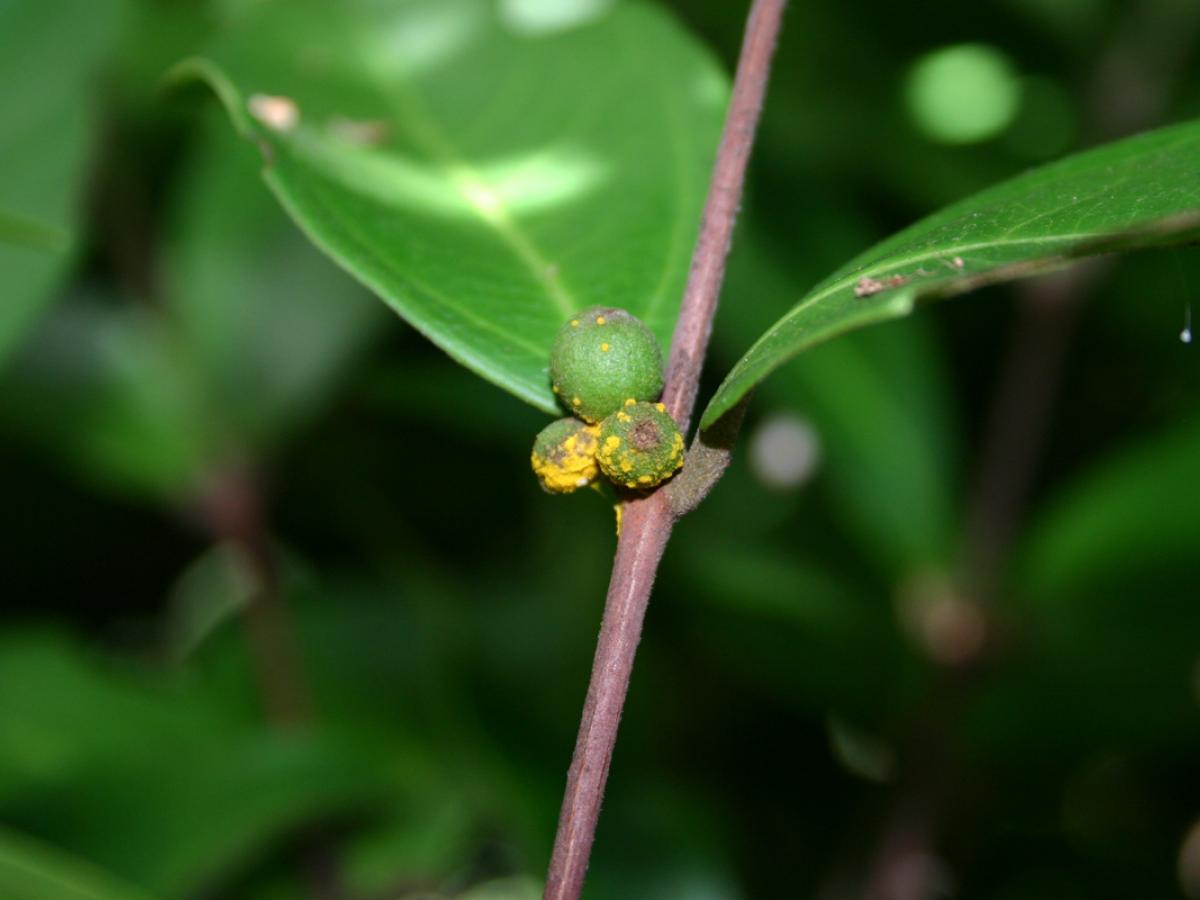A citizen science campaign aims to find and track myrtle rust in Australia to reduce the impact of the invasive disease in Australia.

Myrtle rust on Rhodamnia sessiliflora fruit. Photo credit: Geoff Pegg.
University of Adelaide PhD candidate Rebecca Paxton has worked with the Atlas of Living Australia (ALA) during an internship to support Myrtle Rust March - a program encouraging Aussies to locate and record the spread of spores.
The ALA, which is supported by the National Collaborative Research Infrastructure Strategy and hosted by CSIRO, is known as Australia's biodiversity database and has shared a myrtle rust reporting guide to help people identify and report the fungus.
"Myrtle rust is one of many invasive species impacting Australia's unique and iconic biodiversity and primary industries," says Rebecca, who is in the third year of a social science PhD.
"I was keen to intern with the ALA to support members of the public to actively and responsibly fight against biosecurity threats, like myrtle rust, through citizen science."
Myrtle rust is a South American plant fungus that was first detected in Australia in northern NSW in 2010. It produces bright yellow spores that appear on new leaves, stems, flowers, or fruit, and which can be easily spread on hair and skin, clothes, shoes, gardening or hiking equipment, car or bike tyres; animals and insects; infected plants or plant materials, and even by the wind.
The disease affects seedlings, saplings and old established trees, and repeated infections can reduce plant vigour, cause significant defoliation, kill more susceptible trees, and prevent flowering and fruiting on others.
By interfering with plant reproduction, myrtle rust also reduces the food resources for many native animals.
"Unfortunately, efforts to control the spread of myrtle rust after introduction to Australia in 2010 were unsuccessful," says Paxton.
"The fungus is now widespread in Queensland and New South Wales, where it is having severe impacts on several previously common Australian native Myrtaceae species.
"At least 15 species of Australian rainforest trees are threatened with extinction in the wild because of myrtle rust."
Myrtle rust spores have been detected in South Australia, but as yet no infections have been reported.
In most areas, there is little data available to help track the spread of myrtle rust, partly because it occurs in areas that are difficult for researchers to monitor. This makes citizen science crucial to understanding myrtle rust's presence in Australia.
"Citizen science can act as an early warning system to let us know when myrtle rust spreads to a new area," Paxton says.
"This is one reason why we are encouraging people to keep an eye out for myrtle rust in areas where it hasn't yet been observed, including South Australia."
If bushwalkers or gardeners come across myrtle rust, they are encouraged, firstly, not to touch the fungus so as not to aid its spread, but to photograph the spores and the plant and upload the photos to a free citizen science mobile app, such as iNaturalist or NatureMapr.
Scientists will then have access to data to assess the spread of myrtle rust and how it is affecting different plants.
"Over time, more and more Myrtaceae species are becoming susceptible to myrtle rust infection," Paxton says.
"It is important to monitor how susceptible or resistant different Myrtaceae species are because this can provide hints for how to tackle myrtle rust in the future."






